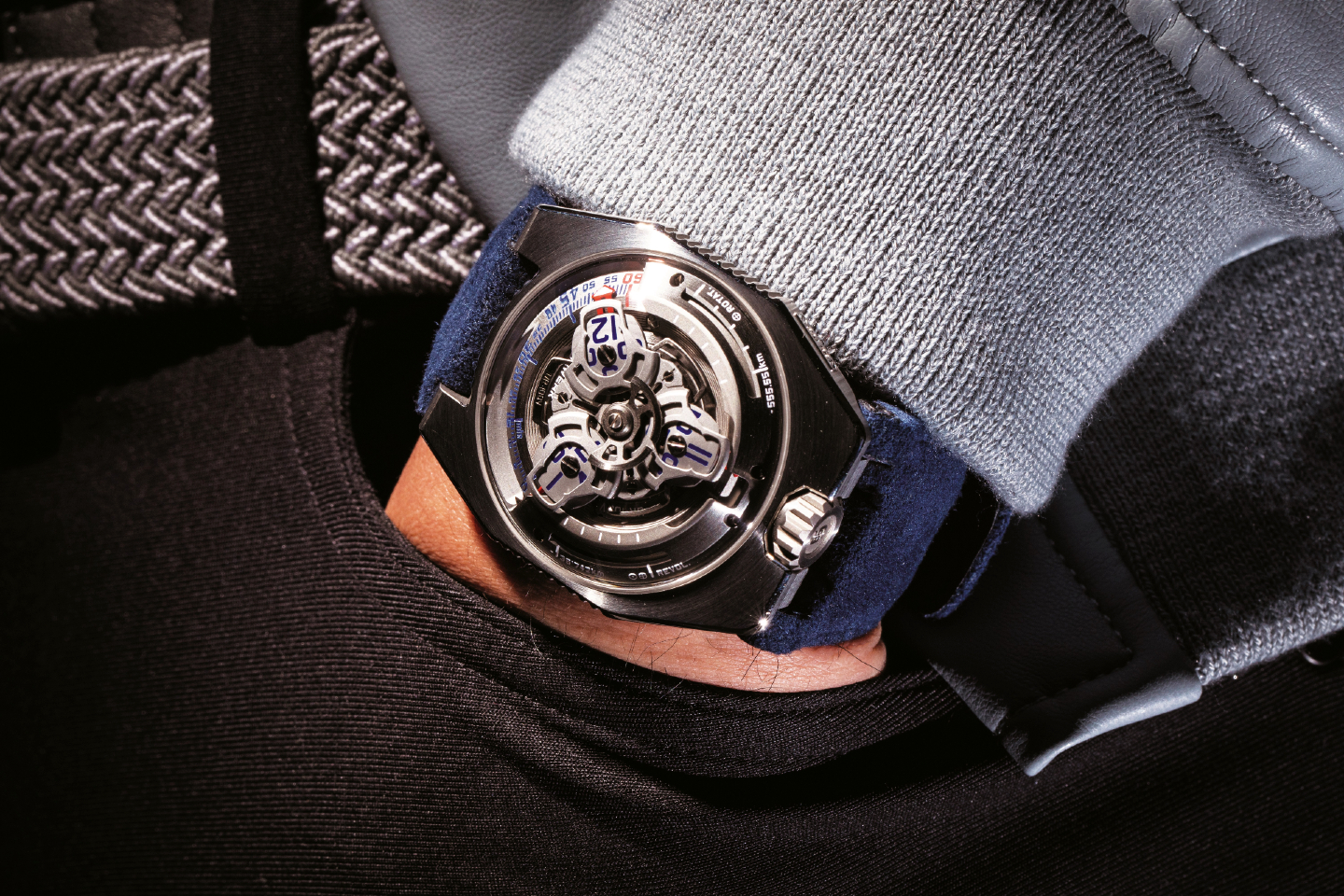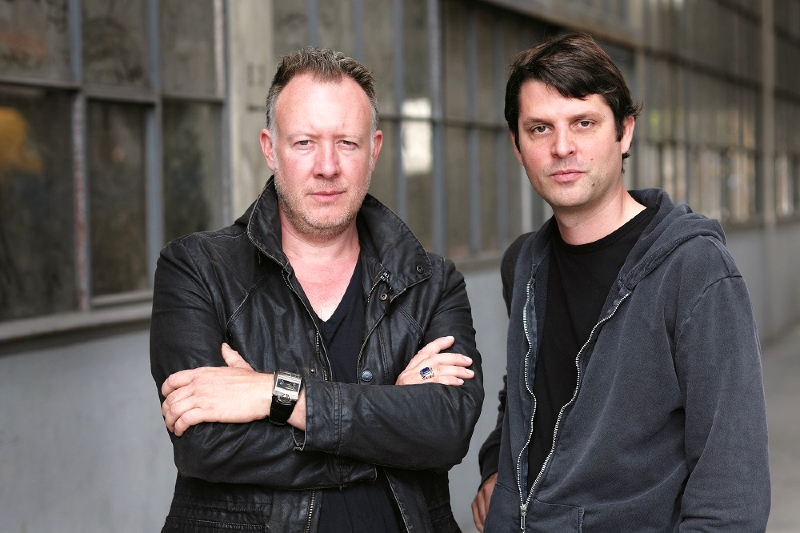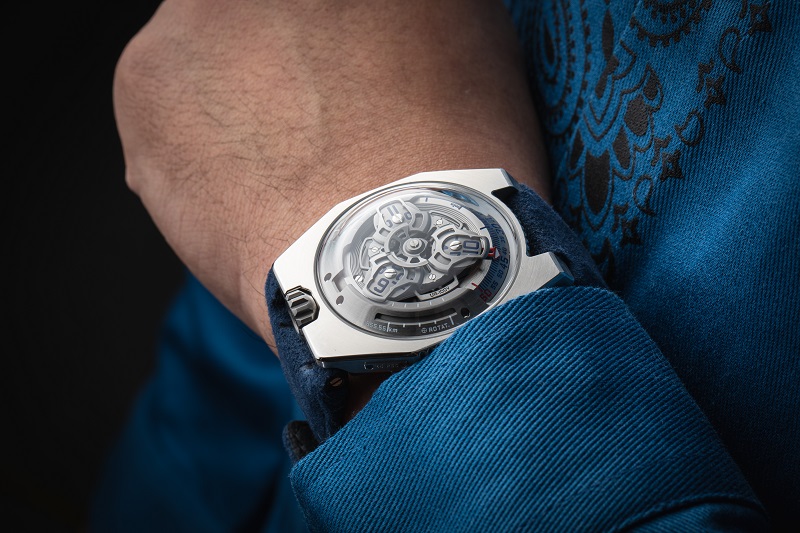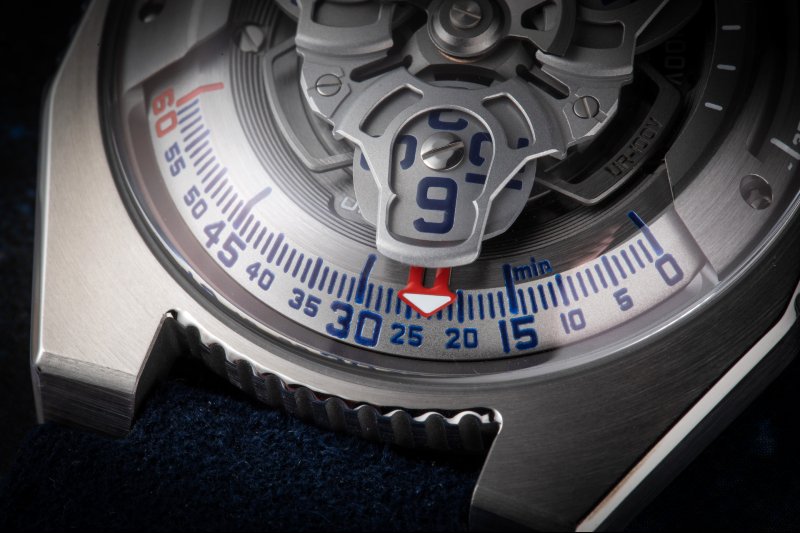
In addition to time, the UR-100 V Iron also measures the Earth’s revolution on its orbit and around the sun (All photos: Urwerk)
In the madness and busyness of our lives, it can be hard to remember that we are but minute cogs in the massive machine that is the universe. Yet that is all we are. The collective immensity and intensity of human emotions pales when compared with the pull of the tides, the shifting of tectonic plates, the orbit of the planets in our solar system — the larger forces at play.
Geneva-based Urwerk was founded in 1997 by master watchmaker Felix Baumgartner (not to be confused with the Austrian skydiver of the same name) and chief designer Martin Frei. Named after the Sumerian city of Ur in southern Mesopotamia, where our perception of time was first moulded, and the German word “werk”, which means “to create”, it specialises in avant-garde machines built on the traditions of haute horlogerie.
The recent regional premiere of a new limited-edition UR-100 model affirms that premise. The futuristic UR-100 V Iron resembles a spaceship with a clear sapphire crystal dome set atop a stainless steel and titanium case — an apt description as it indicates time that is somewhat out of this world. In addition to the watchmaker’s trademark satellite configuration of the wandering hours and minutes, the timepiece brings our place in space into sharp focus with its tandem display of time and distance.
urwerk_founders_frei_left_and_baumgartner_1.jpg

Baumgartner was inspired by a clock his father found in a small store in Switzerland. It was built by Gustave Sandoz for the 1893 Universal Exhibition and measured distance travelled by a point on the equator rather than time. In the UR-100 V Iron, two indicators that skim the dial respectively track the rotational distance from the equator as Earth orbits and the planet’s revolution around the sun (orbital distance). Both are calculated on 20-minute scales; the former shows that we turn 555km every 20 minutes while the latter displays the 35,740km we traverse in our journey around the sun in the same amount of time.
“It really gives you a feel for time and space, gives your imagination a sense of this reality. Fasten your seatbelts!” jokes Baumgartner, who showcases Sandoz’s clock at Urwerk’s Geneva Atelier. “As a child, my father used to show me crazy, complicated astronomical clocks but all they made me think of was complexity; they didn’t really transport me into these fantasies. But the UR-100 V Iron is a reminder of who and where we are. Gustave’s clock inspired me to do this in a very simple yet emotional way.”
The large case — 41mm in width and 49.7mm in length — houses a carousel base as well as a hollowed structure on top of the three satellite hours forged from anodised aluminium. The carousel itself comprises sanded brass plated in ruthenium. The coolness of the various metals, from case to heart, is softened by refined finishing, with techniques used including sanding, sandblasting, shot peening and circular graining. A blue Alcantara strap with a titanium buckle completes the look.
257-201023_ur_100_iron_hr84-121a9751.jpg

Powering the timepiece is the new 12.02 calibre, an ultra-slim movement that enabled the redesign of the carousel to bring the relevant hour closer to the 60-minute scale for easy reading of the time — just match the displayed hour by the scale with the white-tipped minute arrow. It is remarkably flat for a satellite watch, with a height of just 14mm.
“The hard outlines of the case highlight the perfection of the sapphire crystal dome. Because I’m always at odds with the dictates of symmetry, I used different proportions to catch the eye,” says Frei. “I wanted to deconstruct the case, keep the essence but let both time and space be viewed. I wanted to impart a sense of three-dimensionality, so we raised the sapphire crystal to be part of the case. And I like it when watches look like prototypes, [and] are pure. The UR-100 V Iron appears in all its naked glory, leaving only the light reflecting on the metal to reveal its spirit.”
Said spirit — that of innovation and audacity, underlined with a suggestion of rebellion — is evident throughout the brand’s oeuvre and is what snagged Urwerk the Gaïa Prize for Entrepreneurship, akin to the Nobel of watchmaking. The 25-piece UR-100 V Iron is part of the (at most) 150 timepieces it produces in a year. Acquiring ownership of skills such as finishing (the UR-100 V Iron was entirely finished in-house) and keeping bottom lines healthy with such limited production is no mean feat for a team of just 15 people. However, 23 years of experience have confirmed the co-founders’ belief that this intimate set-up best fosters their creativity and excellence.
440-201023_ur_100_iron_hr84-121a0163_1.jpg

“Since the beginning, we have been playing this ping-pong game among our small team, bouncing ideas to develop these exquisite watches,” says Frei. “It keeps us in a position where we are forced to constantly invent new stuff. It’s an evolutionary process; we take small steps, only very occasionally bigger ones, that allow us to push innovation.”
Baumgartner agrees, testifying that the relationship between the partners is the bedrock of this successful arrangement. “Martin and I, we have been working together for two decades. There is mutual respect and interest in machines and instruments, art and architecture. We must be doing something right to have come to where we are. And we are open to any and all ideas. Our team wears everything from Casio to Seiko on our wrists. Inspiration is everywhere.”
“To create something contemporary, you need as much input as possible from the things around you,” continues Frei. “For us, we saw that it is not possible to think of time without thinking of space as the two terms are inherently linked. We now have a watch that actually indicates this; maybe the first, or one of the few, to explicitly show the association between time and space.”
This article first appeared on Nov 16, 2020 in The Edge Malaysia.


